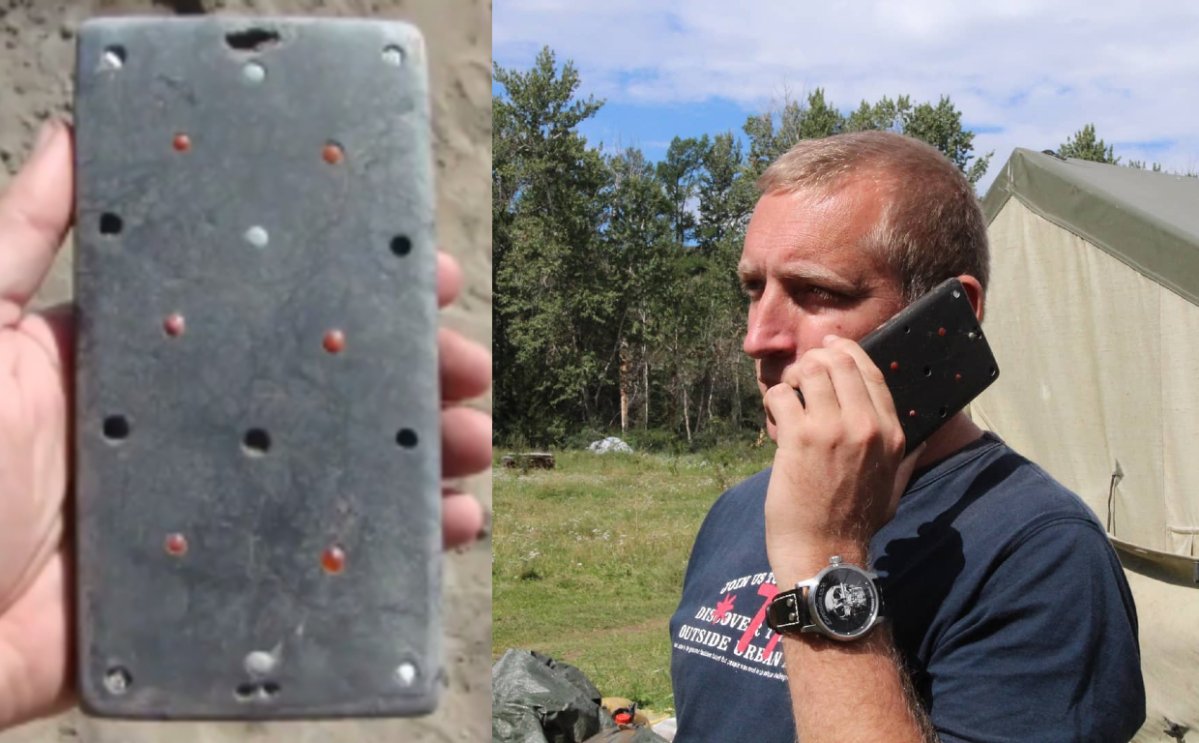It’s hard to imagine someone over 2,000 years old would have had any need for an iPhone case.

Of course, they didn’t — but a recent discovery at a southern Siberian archeological dig certainly made it seem so.
Dubbed “Natasha’s iPhone,” a Russian archeological team found a black, jewelled rectangular item that at first appeared to make a perfect case for an iPhone.
READ MORE: ‘They wanted to be immortal’ — Mummies have stories to tell at Montreal Museum of Fine Arts
In actuality, the nearly immaculate discovery was a belt buckle made of jet — a gemstone made from pressurized wood — with small beads of mother-of-pearl, turquoise and carnelian inlaid on the surface, the Siberian Times reported.
The ancient buckle was actually discovered in 2016 but was brought back into the limelight when Pavel Leus, an Russian Academy of Sciences researcher, shared images of the artifact on his Instagram account, the Russian publication states.
The decorative piece, which measured about seven inches long and four inches wide, was found laying on the skeleton’s pelvis in her grave.
Scientists were able to accurately date the item as 2,137 years old because of the Chinese wu zhu coins decorating it.
The artifact was first found in a giant man-made reservoir on the Yenisei River of the Sayano-Shushenskaya Dam. Every May and June, the water drains and exposes the floor of the dam, which has been home to many archeological discoveries.
The Siberian Times reports that graves dating from as far back as the Bronze Age to the time of Genghis Khan, who died in 1227, have been found here.
READ MORE: Police recover head of 800-year-old ‘Crusader’ mummy stolen from Irish crypt
“This site is a scientific sensation,” Marina Kilunovskaya of the St. Petersburg Institute of Material History Culture said. She leads the Tuva Archeological Expedition, where the “iPhone case” was found.
Two partly mummified skeletons were previously found nearby — one draped in silks and thought to be a leather designer, and another thought to be a weaver and buried with a wooden spindle inside a sewing bag.
“We are incredibly lucky to have found these burials of rich nomads that were not disturbed by grave robbers,” Kilunovskaya said.
—




Comments